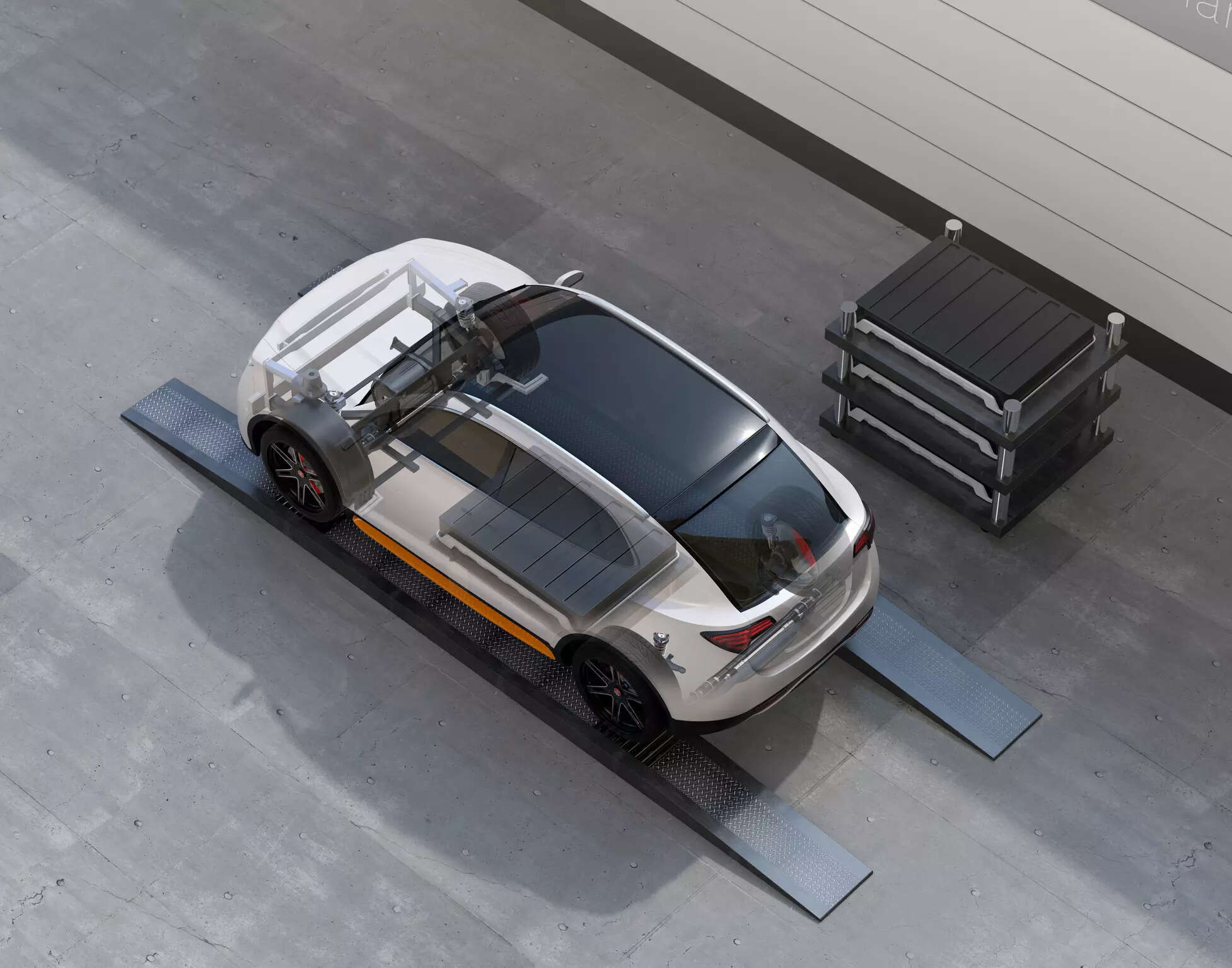
By Srihari Mulgund
Charging infrastructure and the charging time of an electric vehicle (EV) are two of the biggest barriers to their mass adoption in India. In an attempt to address these issues and accelerate the transition to green mobility, the Union Government is pushing battery swapping as a workable option, especially for the two and three-wheeler segments, as their average battery size is smaller than that of four-wheelers and commercial vehicles.
The basic construct of battery swapping is the same as having a device fitted with batteries for continuous use, such as a remote control, instead of charging it each time, like a mobile phone. The only difference is that for EVs, the customer will have to swap the discharged battery for a charged one at a swap station.
The rationale in pushing this option is to de-link the battery cost from the EV cost and minimize recharging time. Since the battery accounts for almost 30%-40% of an EV’s cost, this policy could help achieve cost parity between EVs and ICE vehicles.
While the details of the battery swapping policy announced by Finance Minister Nirmala Sitharaman in the Union Budget 2022 are expected to be available in the next three months, the intentions of the Government are to:
a) Encourage (possibly through incentives) the private sector to develop Battery-as-a-Service (BaaS) solutions, and
b) Promote battery interoperability.
Challenges in battery swapping
For battery swapping to be successful in India, the following challenges must be addressed:
Interoperability: Currently, battery packs in EVs are not standardized. Hence, they are incompatible with the diverse vehicle segments, brands and models. Ensuring battery compliance with different vehicle models and standardizing the battery packs and connectors will play a key role. On the software front, establishing a standard communication protocol between the battery management system (BMS) and the motor controller will be crucial for overall efficiency. In addition, carrying out extensive product validations will help improve the performance and safety of battery packs.
Battery inventory: For every battery in the vehicle, there needs to be a backup battery. The inventory can be as high as 40%-50% at the start of operations but can be lowered to 10% -15% through effective optimization. Extra inventory will be necessary during specific operational scenarios such as demand peaking and maintenance of on-field batteries.
Captive demand: Besides batteries and inventory, battery swapping necessitates investment into real estate and equipment. The swapping stations need to be located at prime spots that are easily accessible to customers, attracting high rental costs. Being a Capex-intensive business, asset utilization becomes key for long-term sustainability.
Hence, demand creation for BaaS is critical, which can be addressed by:
1.Confirming minimum capacity utilization via captive demand (e.g., fleets, vertical integration); and
2.Forging upfront relationships with established vehicle manufacturers.
Other challenges associated with battery swapping include:
a) Faster charging rates (battery charged in less than 2 hrs) tend to generate higher amounts of heat, thereby requiring an Aircon system to maintain the battery temperatures at optimum level (~25DegC). The necessity for an Aircon is further fuelled by higher average ambient temperatures of ~35DegC in India.
b) BaaS operators need to ensure a uniform range per swap for customers, irrespective of the age of the battery pack, which can be achieved through smart software features.
c) Lithium batteries are highly flammable, and the recent events of vehicle battery fires have only aggravated this concern. The risk exacerbates when multiple battery packs are being handled in one place at the swap station, and in an unlikely event of a fire due to bad practices, an entire area in a dense urban setting will be exposed.
Is battery swapping a long-sighted decision?
While battery swapping is expected to remain attractive for the uptake of EVs in the medium term, its relevance will be evaluated in the long term.
When the battery technology improves, the energy density is likely to get better and more capacity can be packed into the battery, resulting in a longer range per charge. This, coupled with reduced charging times, will be a potential challenge for BaaS businesses.
However, ultra-fast charging comes with challenges like:
1.Need for additional cooling arrangements in a vehicle, which should be a given in case of battery swapping;
2.Need for Grade A battery cells to enable fast charging. Low-cost Grade B cells are popular among Indian manufacturers now; and
3.Infrastructural necessities like larger parking spaces as fast charging require parking the vehicles for at least 30 minutes, while battery swapping takes less than 5 minutes.
While battery swapping will enable the mass adoption of 2 and 3-wheeler EVs, it might not be the appropriate solution for passenger and commercial vehicles. The massive weight of the lithium-ion battery pack would make swapping harder, if not impossible. Furthermore, the infrastructure required to swap bigger, heavier battery packs, such as robotics arms, etc., will be much more complex and expensive. At EY-Parthenon, we currently believe that passenger vehicles will gravitate toward fast/ultra-fast charging. In contrast, heavy commercial vehicles, in the medium term, will likely go down the route of low carbon fuel options such as hydrogen.
The success of the BaaS will depend on devising efficient ways to address the issues mentioned above. As these issues are interrelated, finding the right balance through technology and disruptive business models is the need of the hour.
(Disclaimer: Srihari Mulgund is Partner at EY Parthenon (Lead – Electric Vehicle Value Chain). Views are personal.)
Also Read:
















